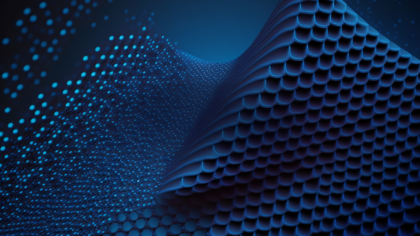Accelerate Productivity in 2025
Reignite Growth Despite the Global Slowdown
Our Innovation Analysts recently looked into emerging technologies and up-and-coming startups working on solutions for smart cities. As there is a large number of startups working on a wide variety of solutions, we decided to share our insights with you. This time, we are taking a look at 5 promising stormwater management startups.
Heat Map: 5 Top Stormwater Management Startups
Using our StartUs Insights Platform, covering 1.116.000+ startups & emerging companies, we looked at innovation in the field of water management. For this research, we identified 44 relevant solutions and picked 5 to showcase below. These companies were chosen based on a data-driven startup scouting approach, taking into account factors such as location, founding year, and relevance of technology among others. Depending on your specific criteria, the top picks might look entirely different.
The Global Startup Heat Map below highlights 5 startups & emerging companies developing innovative stormwater management solutions. Moreover, the Heat Map reveals regions that observe a high startup activity and illustrates the geographic distribution of all 44 companies we analyzed for this specific topic.
Flood-Con – Intelligent Stormwater Control
Increasingly, various adverse weather events from wildfires to flooding pose a major threat to cities. Poorly managed water infrastructure, built without the proper understanding of natural hydrology, is the cause for urban stormwater-related water-logging and flooding. Startups working to solve some of the water-related challenges facing big cities are developing innovative technology-based solutions.
Flood-Con is a US-based startup building control structure that mimics pre-developed hydrology during a real-time storm. The startup treats urban stormwater runoff by employing a series of movable gates that open and close, allowing for a specific rate of discharge, for any given time during or after a storm. Flood-Con’s system replaces conventional flood management with fixed opening control structures, reservoir routing, and hypothetical storm modeling.
FloodMapp – Hydraulic Flood Modeling
According to the World Health Organization (WHO), 75% of flood-related deaths arise from drowning events. This drives emerging data analytics and visualization companies to develop real-time mapping and routing tools during flooding. Such technology has the potential to save lives during floods. By categorizing flood zones and planning urban development projects based on this data, cities are able to reduce the risk of flood-related losses and property damage.
Australian startup FloodMapp develops DASH, a proprietary flood forecasting, and an emergency management platform. DASH combines big data analytics, automation, and machine learning techniques with novel hydrology and hydraulic models to achieve large scale, rapid flood modeling. Moreover, DASH ingests LIDAR datasets to output hyper-granular flood inundation extents and depth raster, in real-time. This includes data on rainfall and river-height, predicted peak river-heights, and large-scale inundation mapping.
Bufferblock – Integrated Road & Drainage Solution
Many urban cities and regions in the world face water-logging after storms. Whether it arises from coastal weather depressions or heavy rainfall causing rivers to flood, cities constantly face flooding. This leads startups to develop advanced solutions for improving the water network infrastructure that involves new materials, as well as innovative engineering and construction design.
Dutch startup Bufferblock produces its eponymous water management solution for stormwater drainage and buffering in the urban areas. Bufferblock functions similarly to infiltration crates but offers greater strength with a thinner top layer. This enables less-deep installation and higher buffering capacities, making it a cost-effective solution. Bufferblock also has a water storage capacity of 266 to 532 liters per square meter and is capable of resisting heavy traffic.
StormHarvester – Automated Drainage Monitoring
An emerging concept in modern water management involves sustainable urban drainage systems or SUDS. Various innovations spanning biofiltration, soil percolation, and storm surges work in tandem to enable smart drainage systems for cities. Many SUDS mimic natural drainage processes and combine them with advanced automation to further enhance the quality of water resource management.
StormHarvester is a British startup offering automated monitoring and control of drainage infrastructure. StormHarvester links civil infrastructure such as valves, pumps, and floodgates, with machine learning-based algorithms to predict overflows. The system then automatically operates the relevant parts of the network to reduce spillages. This solution further enables better utilization of the available water storage within the network.
AquiPor – Permeable Hard Surface Material
During excess rainfall or even snowmelt, drainage systems risk getting contaminated with agricultural, industrial, or home-based pollution. This polluted water later ends up in river streams or in the ocean. Startups are developing multi-disciplinary solutions, spanning materials, construction, and civil engineering, to tackle urban water-logging and regular flooding.
The US-based startup AquiPor creates permeable hard surface material that matches the strength and durability of concrete. AquiPor’s material functions are similar to a hard surface filter, capable of sifting out harmful pollutants and particulates that are problematic in stormwater. In addition, this material filters stormwater without clogging from dirt and debris. Stormwater later permeates through the material and subgrade, returning naturally to the ground below. The material is capable of handling up to 25 inches of water every hour, helping eliminate large-scale runoff.
What About The Other 39 Solutions?
While we believe data is key to creating insights it can be easy to be overwhelmed by it. Our ambition is to create a comprehensive overview and provide actionable innovation intelligence and enable you to achieve your goals faster. The 5 stormwater management solutions showcased above are promising examples out of 44 we analyzed for this article. To identify the most relevant solutions based on your specific criteria, get in touch.



![Explore the 10 Emerging Smart City Trends [2025-2030]](https://www.startus-insights.com/wp-content/uploads/2025/06/Smart-City-Trends-SharedImg-StartUs-Insights-noresize-420x236.webp)




